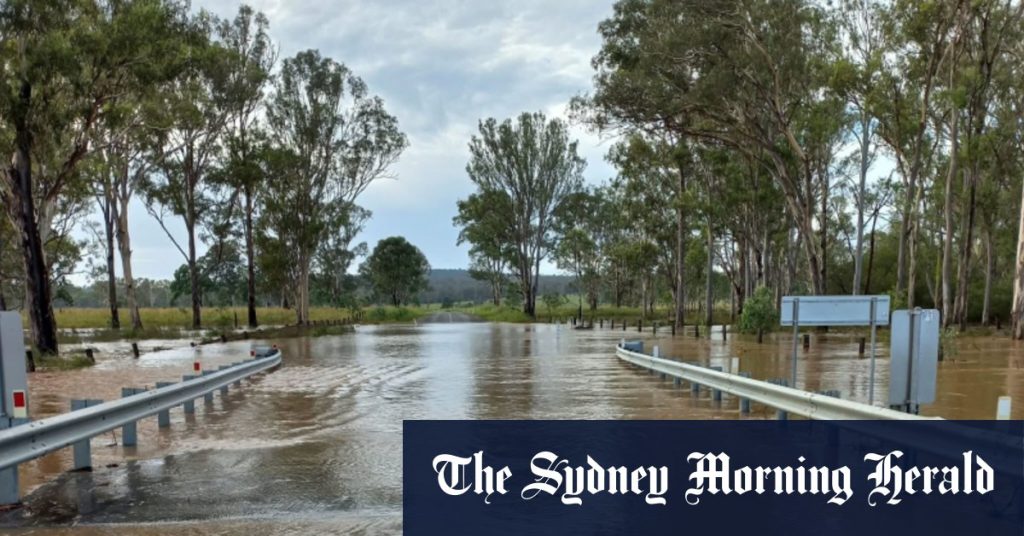The relentless rain that plagued southern and central Queensland over the New Year period continued into the early hours of Thursday, triggering further flash flooding and necessitating the rescue of three individuals, including a child, from a submerged vehicle. The incident occurred near Lockrose, west of Brisbane, highlighting the persistent danger posed by the ongoing deluge. While the rescued individuals were fortunate to escape without injuries, the event underscores the precarious situation facing residents in the affected regions. The recurring nature of these flood events raises concerns about the vulnerability of communities and infrastructure to the increasingly unpredictable weather patterns.
The South Burnett Regional Council, northwest of Brisbane, issued a “watch and act” emergency alert early Thursday morning, reflecting the escalating risk presented by the rapidly rising floodwaters. This alert served as a crucial warning to residents, urging them to monitor conditions closely and prepare for potential evacuations. The alert was subsequently cancelled later in the morning as the immediate threat subsided, though the region remained on high alert due to the continuing rainfall and the potential for further flooding. The rapid response of local authorities and emergency services was instrumental in mitigating the impact of the flooding and ensuring the safety of the affected population.
The sustained rainfall in the upper catchments of the Brisbane River system led to increased inflows into two key flood mitigation dams, Wivenhoe and Somerset. As a result, Seqwater, the authority responsible for managing these dams, activated its flood operation centre and announced preparations to release excess water. This proactive measure aims to prevent the dams from overtopping and causing widespread inundation downstream. The controlled release of water allows for a gradual reduction in dam levels, mitigating the risk of catastrophic flooding in populated areas.
While Wivenhoe Dam was utilizing a relatively small portion of its flood mitigation capacity (0.4%), Somerset Dam was operating at a higher level (1.3%). This difference reflects the varying catchment areas and rainfall patterns affecting each dam. Seqwater’s decision to initiate preemptive releases demonstrates a commitment to utilizing the full capacity of the flood mitigation infrastructure to protect downstream communities. The controlled releases will be managed in accordance with established operational procedures to minimize disruption and ensure the safety of residents and infrastructure.
The ongoing rainfall and subsequent flooding highlight the critical role of dams like Wivenhoe and Somerset in mitigating the impact of extreme weather events. These large-scale infrastructure projects provide a vital buffer against potentially devastating floods, allowing authorities to manage water flow and protect vulnerable communities. However, the increasing frequency and intensity of these events underscore the need for ongoing investment in flood mitigation measures and the development of comprehensive strategies for adapting to a changing climate.
The repeated flooding experienced in southern and central Queensland serves as a stark reminder of the vulnerability of these regions to extreme weather events. The rescue of three individuals from floodwaters and the activation of flood mitigation measures underscore the importance of preparedness and community resilience in the face of these challenges. As climate change continues to influence weather patterns, it is crucial that governments, communities, and individuals work together to develop and implement effective strategies for mitigating flood risks and ensuring the safety and well-being of all residents. This includes investing in robust infrastructure, implementing early warning systems, and promoting community education and awareness programs to ensure that everyone is prepared for the increasing likelihood of future flood events.

